There are a lot of dangerously-false survival myths that just won’t go away — even professional news organizations will repeat easily-researched falsehoods. We hate to think how many people have relied on something wrong in an emergency that they had heard once before.
We collect the top disaster myths on one page, along with sources proving they’re wrong. This list will be updated over time as memes and myths come and go.
What survival myths drive you nuts?
Share in the comments below and we’ll do the research!
Be prepared. Don’t be a victim.
Want more great content and giveaways? Sign up for The Prepared’s free newsletter and get the best prepping content straight to your inbox. 1-2 emails a month, 0% spam.
Summary (full info for each busted myth below)
Note: These are worded in the correct answer. So instead of saying “it’s a myth that alcohol warms you up,” we say, “alcohol does not warm you up.” Most myth lists are worded in the negative, but reading the correct version makes it easier to remember in an emergency.
- Don’t cut and suck snake bites.
- Don’t run or climb away from bears, and know when to play dead vs. fight.
- Poking a shark in the eyes is much better than punching it on the nose.
- Don’t stand under doorways.
- The “triangle of life” has been debunked.
- Animals can’t predict earthquakes.
- The west coast isn’t going to float away after a quake.
- Don’t hide under overpasses.
- Tornadoes do hit cities, and they’re not attracted to trailer parks.
- Cracking your windows during a storm does not relieve air pressure.
- You need to protect all windows, not just the ones facing water.
- Taping your windows before a storm only makes things worse.
- Don’t hide valuables in your dishwasher during a storm.
- Category 2-3 storms can be just as deadly, because water kills more than wind.
- Insurance covers less than people expect.
- Relying on filling your bathtub or tapping your water heater in an emergency is a really bad idea.
- Not all people turn into lawless maniacs when SHTF.
- Multivitamins aren’t worth it.
- Dead bodies don’t spread disease more than the living.
- The world is just as likely to have a pandemic as in the past.
- Closing borders doesn’t help.
- Bandanas and surgical / dust masks protect other people from you, not the other way around.
- Don’t rub frostbitten skin or put hypothermic people in hot tubs.
- Tampons don’t have coagulants and are not useful for plugging bullet holes.
- If you’re impaled or stabbed with something, you should remove it in most cases.
- Tourniquets do not result in amputation or nerve damage.
- It’s usually better to stay put or shelter in place (“bug in”) than to wander around or bug out.
- Alcohol does not warm you up.
- You do not lose 50-80% of body heat through your head.
- Starting a fire by rubbing sticks together is so hard, you probably won’t succeed without practice.
- Once normal matches get wet, they won’t work again, even if you dry them.
- Water doesn’t expire, but it can go bad if not stored properly.
- Boiling water doesn’t mean it’s safe.
- Drinking urine is a really bad way to hydrate.
- Drinking cactus water will make you sick.
- Just because an animal eats something doesn’t mean it’s safe for humans.
- Moss doesn’t always grow on the north side of trees.
- Birds don’t always fly to water.
- Gun “stopping power” matters much less than actually hitting your target to begin with.
Myths about prepping and preppers:
- You cannot predict what is going to happen in an emergency, so stop making narrow plans!
- The “72 hour rule” is really outdated. Prepare for at least two weeks. In reality, things take a long time to get back to normal.
- You cannot rely on government or other people to save you.
- Preppers are not crazy forest hermits — normal, sane people are prepping because it’s the rational thing to do.
- Too many preppers think that when SHTF, you just walk a little bit outside of town and everyone becomes wilderness farmers.
- Prepping does not take huge amounts of money.
- Prepping is not all about doomsday bunkers and stockpiles of ammo — a first aid kit and some bottled water is prepping, too.
- Preppers are not selfish and have not “given up” on the world. Many work to prevent problems and prep to help their community.
- You’re almost always better off in a community/group than as a lone wolf.
- If your plan is to take from others, you’re an asshole.
Animal attack myths
Don’t cut and suck snake bites
Another movie myth that just makes things worse. Venom enters the bloodstream very quickly, and no amount of mouth-suction is going to stop that. Plus, putting a gross mouth with foreign germs on a toxic wound isn’t a good idea for either person. Even snake bite kits used within minutes of the attack leave >90% of the venom behind. Instead, keep the victim’s heart rate down and keep the bite as far below heart level as possible, which will slow down how the venom spreads through the body while you get to medical help. If you can safely capture/kill the snake to bring with you — if not, take a picture, remember the colors and marking patterns, etc — it makes things much easier for doctors to find the right anti-venom.
Bear attacks: Don’t run, don’t climb, and playing dead vs. fighting depends on the type of bear
Don’t try to run — running makes bears think you’re prey and their instincts kick in, so they’re more likely to attack you than if you stood your ground. Plus they are much faster than you (~30 MPH). Similarly, don’t climb a tree since bears are better climbers than you. Calmly and slowly back away to de-escalate the threat.

If they attack, whether you should fight back or play dead depends on the type. Grizzlies (typically a brown color, and always with a hump on their back) will stop fighting if you’re dead, so curl up, protect your head and neck, and stay still. Black bears are more timid, and will back down if you make yourself seem threatening. Stand up tall, lift your jacket over your head, yell, etc. If a black bear attacks, fight back and show that bear who’s boss.
Remember: Brown = lay down. Black = fight back.
Poking a shark in the eye is better than punching it on the nose
Don’t play dead. Fight back, but focus on the sensitive parts, like their eyes and gills. Punching through water is hard enough already, and there’s nothing particularly sensitive about their nose. Try to rip their eyes out with your fingers and they’ll almost always let you go.
Earthquake myths
Learn how to prepare for and survive earthquakes.
Don’t stand in doorways
This used to be true based on how buildings were built in the past (namely unreinforced masonry buildings), but modern construction methods make the doorway just as weak or weaker than other parts. Your best best is to take cover under a sturdy table, or at least duck near a sturdy wall.
The “Triangle of Life” is not the right way to hide
In the 1990s, one person advocated the Triangle of Life as a superior way to survive earthquakes compared to the “duck and cover” method. The idea is that you get into a space that will be a protected pocket if the building “pancake” collapses — imagine a wall that crumbles over a refrigerator, and you’re in the triangle underneath and between the wall/fridge. The Red Cross, US Geological survey, and more have debunked this. There’s too much unpredictable movement during a quake to depend on that triangle pocket.
Animals don’t predict earthquakes, they just feel them before you do
Animals don’t have magical tectonic powers. They simply have different and sometimes better senses than we do, and they’re paying attention to small vibrations that humans ignore. It’s not unusual for dogs, birds, or horses to change their behavior due to an earthquake. But they’re just noticing it a little sooner than people, and it’s very unlikely you’ll know why until it’s too late.
California will not split off into an island
The whole west coast sits on the San Andreas and Cascadia fault lines. But those plates are either moving north-south, such as California moving closer to Washington, or inwards more towards the mainland. If anything, Los Angeles and San Francisco will move closer together.
Tornado myths
Don’t hide under overpasses
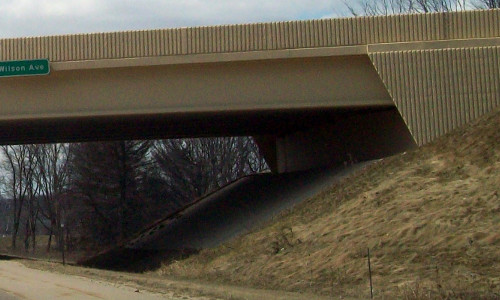
Hiding under a road overpass during a tornado makes things much worse, not better. This used to be common advice, even from professional disaster agencies, until they learned more about tornadoes and realized the design of an overpass increases the air pressure and wind speed. Similar to putting your thumb over a garden hose. You can get sucked out or smashed with debris.
Tornadoes do hit big cities, water, and mountains
Some people think as long as they’re in a city or near something other than flat terrain, they’re fine. But tornadoes actually hit cities quite frequently, including nasty F-4s and F-5s. It just seems like cities are spared because there’s relatively more open flat land in the midwestern / southern US. Conversely, tornadoes aren’t “attracted” to mobile home trailer parks, etc.
Cracking your windows does not relieve air pressure
The danger from tornadoes and hurricanes is high wind, not magical air pressure differences. Your house isn’t airtight anyway. All you’ll accomplish by opening windows is increasing the risk of injury and house damage. Former FEMA administrator Craig Fugate told the Tampa Bay Times that opening windows is “really great for letting the water in your house, making sure there’s plenty of mold. Basically it’s like blowing the roof off the top of your house.”
Hurricane myths
Learn how to prepare for and survive hurricanes.
Taping your windows before a storm only makes things worse
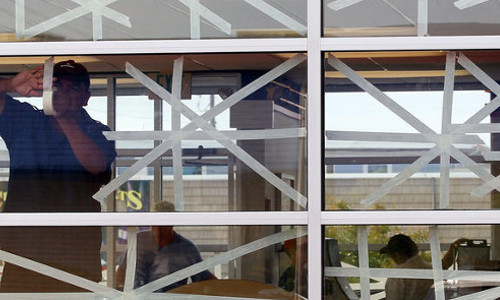
There isn’t any solid data that shows crisscrossing tape across glass is helpful. In fact, it can make things worse because the window will break anyway, but now breaks into larger shards of dangerous glass instead of smaller pieces.
All windows are at risk, not just the windows facing water
Storm shutters are a great idea, but some people only protect glass facing the nearest coast because they think water and wind move in a straight line. Hurricanes are swirling beasts, so wind and shrapnel can come from any direction.
Don’t hide valuables in your dishwasher during a storm
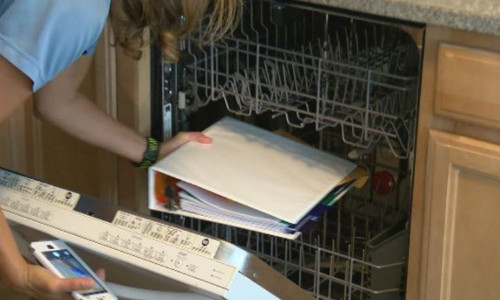
This myth made the internet rounds again after the 2017 hurricane season. Dishwashers are not designed to keep flood waters out; they are designed to keep small amounts of water spray in.
Category 2 or 3 hurricanes can be just as deadly and damaging
According to FEMA, 84% of Americans make the decision to evacuate based on the incoming storms wind speed (which is how category levels are determined). But the biggest dangers from hurricanes are storm surges and flooding, both in terms of number of deaths and property damage.
Disaster myths
Insurance won’t cover everything
2017 was the most expensive disaster year ever. Many people have a false sense of security that their insurance will cover whatever happens. Unfortunately it’s much more complicated than that. For example, if your house gets water damage from a hurricane, whether the water came from above (e.g. through a hole in the roof) or below (e.g. through the doors) will determine if insurance will pay. (In that case, they’ll pay if it came through the top, but not the bottom.)
Don’t rely on your water heater or bathtub for water storage

Buy proper water storage containers! Besides many bathtubs not being clean enough for potable water, the real issue is that there are so many scenarios where you wouldn’t have enough time to fill them up before the emergency strikes. Think of bathtubs and water heater tanks as bonus backups, not your primary supply.
People do not turn into lawless, evil beasts as easily as you expect
There’s a common belief that when things get bad people will devolve into rampaging criminals. Looting, theft, and murder do happen after relatively normal events like hurricanes, and it’s horrible. But in truth, the rates are not nearly as high as people predict. And the threshold that turns people from good to bad is higher than expected. So in most cases it won’t be as bad as you think, but once stuff really hits the fan, all bets are off.
Medical and disease myths
Multivitamins do more harm than good
Americans spend billions of dollars per year on multivitamins. But there is a large and growing body of research, including $2.2 billion spent on studies by the National Institute of Health, that shows multivitamins have almost no positive effect. To make matters worse, there’s growing evidence that multivitamins cause harm, leading to increased risks of cancer, heart disease, and early death.
Dead bodies don’t spread disease more than the living
To be honest, this one was surprising to us, too. The World Health Organization has published studies showing there’s no general increased risk posed by corpses. This myth likely comes from historical periods like the Black Death bubonic plague, which killed a third of all humans, because keeping piles of already-infected corpses around did lead to higher transmission rates through fleas, rats, etc. But dead bodies after something like a hurricane don’t pose extra risk.
Epidemics are just as possible now as they were in the past

Many think that because of modern medicine, something like the 1918 Spanish Flu (which killed 75 million people) can’t happen again. Even though the conditions are different today, we’re still at risk of major pandemics. Medicine is better, but someone can fly from Hong Kong to New York before officials even know what’s happening. Bill Gates, who has spent more money fighting disease than any person in history, believes we are at major risk of an epidemic or bio attack.
Closing borders does not stop epidemic outbreaks
During the 2014 Ebola outbreak, many people called for a closure of borders. But follow up studies have shown those responses don’t work, like this study of the 2009 H1N1 outbreak. Our world is too interconnected, too many people think they’re special and will circumvent the rules anyway, and disease doesn’t care about political borders.
Bandanas and surgical or dust masks don’t help you in respiratory emergencies
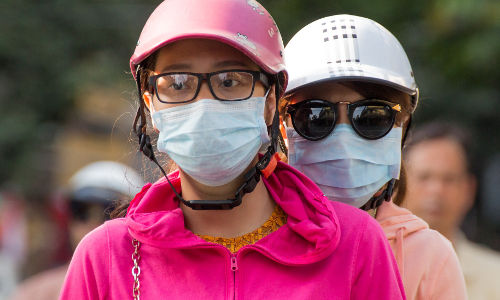
See our top-ranked guide on respirators and gas masks for preppers. Way too many people think they can put on a surgical mask (the disposable paper masks you often see in daily life throughout Asia) and be protected from disease, smoke, pollution, etc. In fact, those masks protect other people from you. Bandanas are just as ineffective, letting 97% of harmful particles through — although they can be helpful against very large particles (like wood smoke) or as a sling, water filter, makeshift hat, etc.
Don’t rub frostbitten skin or put someone with hypothermia in a hot tub
See our guide on how to survive cold weather winter emergencies. Rubbing frozen and damaged skin just makes it worse, since the tiny amount of friction heat generated is outweighed by the cell damage caused by rubbing. For both frostbite and hypothermia, slowly raise the ambient and core body temperature.
Tampons are not effective for plugging bullet holes and deep wounds
Tampons do have many nice survival uses, like fire starting, and can help with bleeding in a pinch (as a substitute for gauze), but people keep sharing this myth because it sounds crafty, neat, and gender-woke. Tampons do not contain coagulants that help stop bleeding. If you stick one in a bullet wound, all it will do is stop blood from leaking out — it does nothing to fix the internal wound and is no better than some cotton balls. See the great write-up at Havok Journal and our lesson on how to stop major bleeding.
Whether you should remove an impalement depends on the situation
One of the trickier myths on this list because it greatly depends on the context of the situation. If you put a kitchen knife through your hand during normal life, then yes, you should leave it in while you get to the emergency room. But, as medical experts explain in the lesson on wound care, the right choice is usually to remove most impalements yourself when you don’t have easy access to an ER — an important point for preppers.
We included this on the survival myth list because some people have this notion you should never ever remove an impalement. That black-and-white thinking might cause someone to leave an object in during a SHTF emergency, even though the right thing to do is remove it.
The fear of amputation and nerve damage from tourniquets is overblown
Only 0.4% of people who receive a non-professional tourniquet end up with an amputation — and most of those cases are due to the injury being extreme to begin with. Learn more about tourniquet myths and how to use one.
General survival myths
Staying put or sheltering in place (“bugging in”) is usually better than wandering around or bugging out
According to Jessie Krebs, a survival instructor with The Prepared: “People, particularly men, have a habit of wanting to move and do something, to forge ahead and escape. But your default choice should always be to stay put.”
Study after study shows that in the majority of circumstances, staying put is better than moving, whether in your home or lost in the wilderness. Only move if there’s a clear reason you need to, or by doing so you will greatly increase your odds of survival (like a much better shelter you know is nearby).
Alcohol does not warm you up
It might make you feel warm, but it actually lowers your core body temperature and increases the risk of hypothermia. Alcohol opens the blood vessels near your skin, and that extra blood on the surface tricks you into thinking you’re warmer. (The same reason why some people look flush red when drunk.)
You do not lose 50-80% of your body heat through your head
Learn how to properly prepare for winter cold. Since the head is only about 10% of your body’s surface area, you’d have to lose 40 times more heat per square inch than the rest of your skin for this myth to be true. But your body just doesn’t work that way. This old tale comes from the simple fact that heads usually have less heat-trapping clothing on them than the rest of the body, making it the largest “heat leak” simply due to being uncovered.
Starting a fire by rubbing sticks together is a lot harder than you think
Yes, those methods work. But just try them sometime — it’s very unlikely you’ll succeed unless you’ve practiced a few times and know what you’re doing. For example, it’s very unlikely you’ll know how to find the right wood (the thumbnail test is another myth) or know how to create the spark. Carry a lighter or matches instead.
Once normal matches get wet, they won’t work again
Unless you have stormproof matches, normal matches simply won’t work after they’re wet, even if you dry them out afterwards. Water ruins the chemicals used to create a spark on the match head.
Water doesn’t expire, but it can go bad if not stored properly
Learn tips on storage, preservation, and containers in our guide to emergency water storage. Bottled water has an expiration date because, as a commercial food product, it has to. Water itself doesn’t go bad, but in practice it often does because of bacterial growth in the water due to improper storage.
Boiled water is not always safe to drink
Boiling water kills things that are alive, like bacteria and viruses. But it won’t remove particulates. You’ll need a proper survival water filter for that.
Drinking urine is not a good way to hydrate
This isn’t as black and white as other myths, since drinking urine isn’t horrible and it might be a good last resort. But it is a generally bad idea worth avoiding, especially in hot climates. A better alternative is to pee on a cloth or bandana and use it for evaporative cooling on your forehead or neck.
Cactus water is almost always bad for you

One type of barrel cactus, the Fishhook barrel, is the only kind of cactus that’s appropriate for water survival. The rest will make you sick, causing diarrhea and vomiting, making you even more dehydrated. Only drink if you are sure you’ve got the right type.
Just because an animal eats something doesn’t mean it’s safe for humans
There are plenty of plants, berries, mushrooms, and even meats that are safe for some animals to eat, but not humans. Think about dogs and chocolate — safe for some animals (you) but not safe for others (dogs).
Moss doesn’t only grow on the north side of trees

In the northern hemisphere, the north side of objects get the least amount of sun. That’s why the brand The North Face is named that way – the north face is usually the harshest. Since moss likes to grow where it’s cool and moist, it will usually grow on the north side of trees and rocks. But moss will grow anywhere it can, and there’s all kinds of unpredictable sun and shade patterns in forests, so you never know. Don’t make navigation decisions based on moss.
Don’t follow birds to find water
Similar story as moss — sometimes birds are flying to water, but many times they are not. Don’t rely on animals for navigation.
Gun “stopping power” matters much less than actually hitting your target
People on the internet seem to endlessly debate which calibers are best and the concept of “stopping power” — the idea that some bullets are more likely to stop a threat than others. Yes, a .45 hits harder than a .22. But statistics show that it’s far more important that you hit your target to begin with. Those larger and heavier-hitting bullets make it harder to shoot accurately, and you have fewer rounds in your magazine to begin with.
Myths about preppers and prepping
You cannot predict what is going to happen in an emergency
We see this very dangerous myth every single day. Either people skip prepping because they think “well I’ll be dead anyway or I wouldn’t want to live in that world”, or they go too far in the other direction and prepare for overly-specific scenarios with overly-specific plans and gear.
You have no idea what will happen. Most emergencies worth prepping for won’t automatically kill you or destroy society. You have no idea if you’ll end up on foot and your 85 pound bug out bag and specific bug out vehicle route suddenly become liabilities, not assets. Follow the Sane Prepper Rules!
72 hours is not good enough for basic emergency plans
See our prepping 101 kit. For a long time, groups like insurance companies and the Red Cross would promote “72 hour kits”. But we know from mountains of data in the last decades that most emergencies, especially things like natural disasters and disease outbreaks, will disrupt normal life for weeks. Even US territories take months to recover. Thankfully, government and NGO groups are starting to update their advice.
You can’t depend on the government or responders to save you
Even FEMA pleads with the public, “You are your own first responder!” Governments are made of fallible people and imperfect systems with shrinking budgets and shifting priorities. As a result, when big disasters strike (like a hurricane), it overwhelms the government because emergency services aren’t designed for suddenly helping millions of people. For example, 911 can get overloaded or even inactive, as emergency responders aren’t allowed to go outside when it’s too dangerous.
You’re not alone: Everyone is prepping
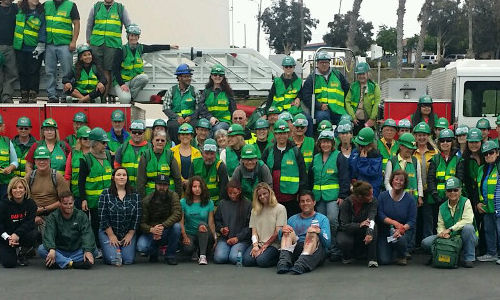
Preppers are not just paranoid, alt-right, anti-social, rural men. Liberal preppers, women, LGBT, millennials in cities, people who don’t care about politics at all, people who love government, suburbanites, professional moms, soccer dads, people who’ve never held a gun or gone camping… everyone is prepping. The only commonality among preppers is being smart enough to realize bad things happen and that you can’t depend on others to save you.
Unfortunately, there’s still a lot of bad behavior among some of the traditional prepper community — conspiracy theories, rejection of science, political memes, and really nasty opinions.
But they’re the vocal minority. Reject it and reject them. The silent majority of preppers — 10s of millions of them in America alone — are calmly and rationally taking steps to protect their homes and families.
Too much about prepping focuses on wilderness and living off the land
The majority of people live in urban or suburban areas. Yet most prepping content uses imagery and tips around very rural wilderness areas. Too many people have this mental image that, even if they live in a city, everyone will somehow just bug out to the woods and suddenly become 19th century farmers. Keep it in mind while consuming prepping content, including ours. We’ll do our best to cover non-wilderness situations, too.
Prepping does not take huge amounts of money
Stories about billionaire bunkers are just voyeurism, and you should treat them as such. You can get started prepping on a budget and cover your most important basics for as little as $100. It’s not always good to cut corners (e.g. water storage), but if you needed to keep the budget tight, start off with buying some bottled water that you rotate through yearly, some nonperishable and easy to eat food, a first aid kit, flashlight, candle, and multitool.
Prepping is not all about doomsday bunkers and stockpiles of ammo
We talk a lot about “Pareto Prepared” in our common sense prepping rules, which refers to the 80-20 rule named after the economist who identified it, Vilfredo Pareto. It means that 20% of the effort has 80% of the reward. In prepping that means covering your basics, like two weeks of supplies and a bug out bag, gets you 80% of the way there. The special stuff like bunkers and faraday cages take much more work to take you from 80% to 99% prepared.
Preppers are not selfish and have not “given up” on the world
We get asked this one a lot by the mainstream press during their excursions into prepperland. If you buy life insurance, does that mean you’ve given up on life? Of course not. The same goes for prepping. Many preppers volunteer through things like Community Emergency Response Teams. When we talk with preppers every day, it’s very common to hear things like. “I prep so that I can help my neighbors after a storm,” and “I know that community is our best way to survive — I don’t want to be alone in a bunker feeling happy I was right.”
It’s more selfish to expect other people, like first responders, to risk their lives and be away from their families in order to come save your unprepared butt.
You’re almost always better off in a community/group than as a lone wolf
Many old-school preppers have this image of a lone wolf walking into the sunset with their dog and their shotgun. But things just don’t work that way. Even if the nastiest of scenarios, you’re more likely to survive with a reasonable group of people who help each other. Which is why it’s smart to share your prepping efforts and recruit others to join you.
If you think “I’ll just kill people and take what I need”, then you’re unprepared and an asshole
We consider this one a myth because, other than being horrible, it’s just an incorrect and tactically-unsound idea that guides much of how some people think. Risking your life to steal from others is not a smart plan. Are you going to start murdering your neighbors for some soup a week after a hurricane shuts down your city? No. Grow up, and get prepared.



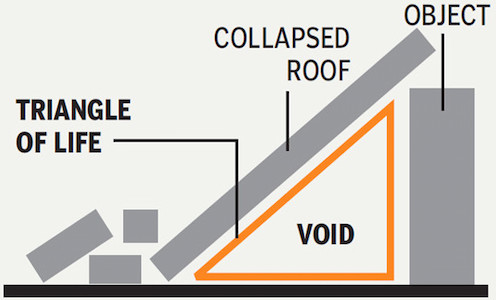
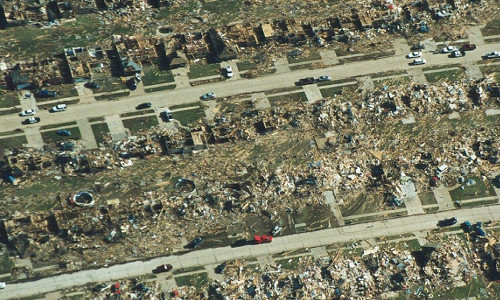


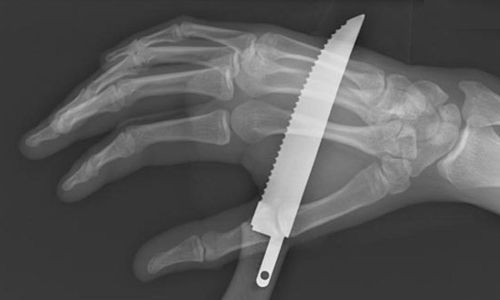

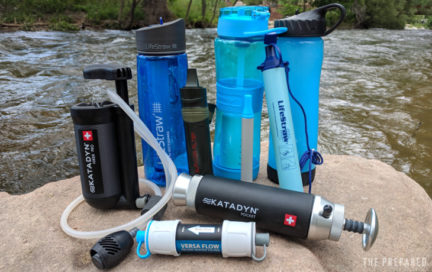
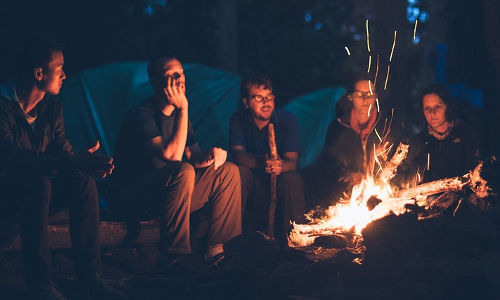
You are reporting the comment """ by on